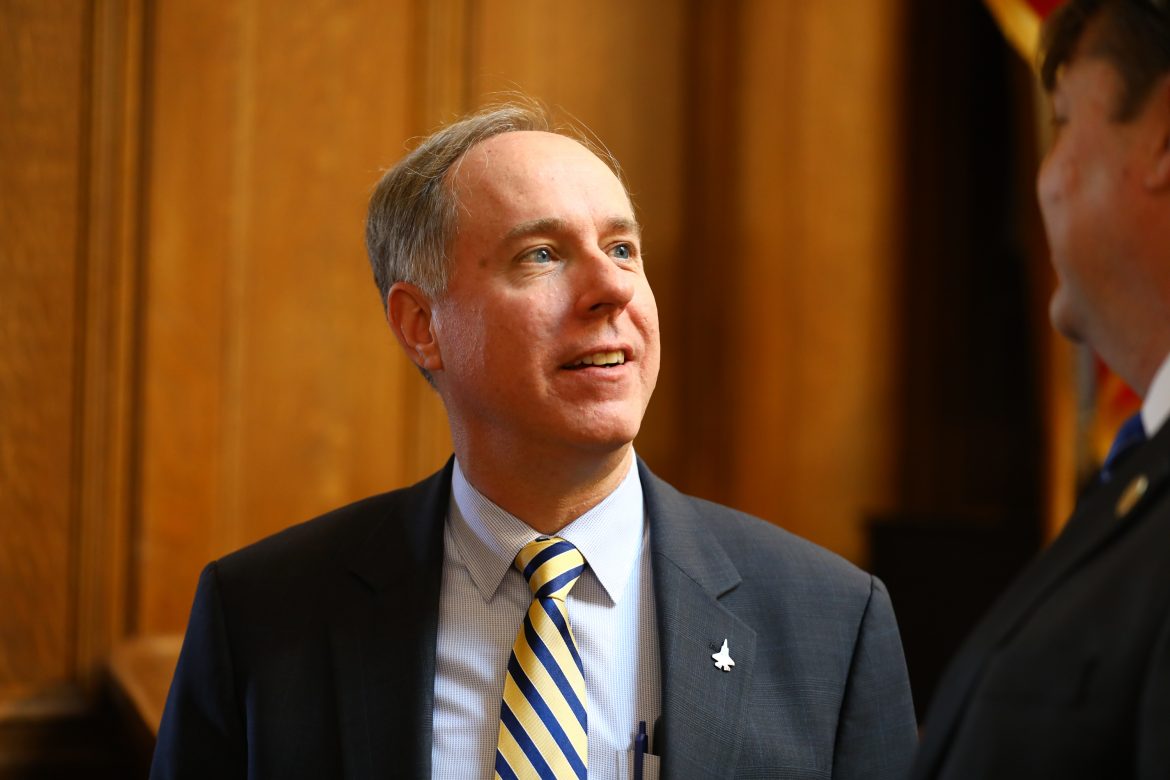On Jan. 24, Wisconsin Assembly Speaker Robin Vos, R-Rochester, praised the state’s health care performance in a statement, naming it “one of the best health care systems in the country.”
Vos’ claim is similar to Gov. Scott Walker’s pronouncement in his State of the State Address hailing Wisconsin’s national top-rated health care quality ranking. The Observatory decided to check out this claim.
Vos spokeswoman Kit Beyer told The Observatory that evidence of Wisconsin’s high ranking is provided in a 2016 report by the federal Agency for HealthCare Research and Quality.
Quality, according to AHRQ, is measured with respect to the agency’s six National Quality Strategy priorities including patient safety, person-centered care, care coordination, effective treatment, healthy living and care affordability.
On this ranking, Wisconsin’s AHRQ score for quality is the nation’s highest at 70.65, followed by Massachusetts, 70.43; Pennsylvania, 66.55; Maine, 64.91; North Dakota, 64.73; and Iowa, 63.97.
But the overall score masks the extent of health care disparities in Wisconsin, experts say.
AHRQ also puts out a National Healthcare Quality and Disparities Report which measures states’ health care strengths, weaknesses and disparities relating to health care access and quality. These disparity data are often overlooked, said Donna Friedsam, health policy programs director at University of Wisconsin’s Population Health Institute.
“Wisconsin secretly is known as a very high performing state overall, driven by the fact that we have a large majority white population that brings up the aggregate score,” Friedsam said. “We are also known as a state with very large disparities.”
Health care quality by race
To understand the bigger picture of state health care rankings, Friedsam said breaking down the progress measures for race, ethnicity and income is necessary.
In terms of AHRQ’s five highest ranking states, Wisconsin, Massachusetts, Pennsylvania, Maine and North Dakota, white citizens make up 72 to 92 percent of their populations.
States with predominantly higher white populations do not inherently have the highest AHRQ rankings. However, Friedsam said these demographic imbalances can lead to outcomes that reflect a state’s progress primarily in terms of the majority race.
For Wisconsin, which is 80 percent white, 6 percent black and 8 percent Hispanic, 136 benchmarks were evaluated. The state achieved or exceeded 56 benchmarks, came close to 64, and was “far away” from reaching 16.
The amount of benchmarks available for assessment among each racial demographic can vary, and they do in Wisconsin’s case. Wisconsin is far away from achieving 23 of the 59 benchmarks for black populations and 12 out of 48 benchmarks for Hispanics in comparison to nine of the 82 measures for the majority white population.
“Wisconsin has excellent health care,” Friedsam said. “But not everyone in our population is experiencing that degree of excellence.”
This fact is most evident after data are disaggregated for race or income, University of Minnesota School of Public Health researcher Elizabeth Lukanen said.
This phenomenon is not an anomaly, Lukanen said, but rather an example of how national health care data contains statistics that can be overlooked.
“All state rankings often mask significant areas of health disparities, particularly by income and race or ethnicity,” she said.
Additionally, Lukanen questioned Vos’ use of AHRQ’s report as a means of state-by-state comparison because the report is meant to compare all states against a set of national benchmarks.
Other reports, however, such as the Commonwealth Fund Scorecard on State Health System Performance and United Health Foundation’s America’s Health Rankings, do compare states against each other. These two ranking systems use their own measures for the quality of Americans’ health and the health care system, differences which can change how Wisconsin ranks, Lukanen said.
For example, the United Health ranking focuses on states’ health outcomes as they relate to policy, community and environment, behaviors and clinical care. United Health ranked Wisconsin’s overall score at 21.
Meanwhile, Commonwealth’s ranking assesses 44 measures to grade states’ overall performance in the areas of health care access, equity, quality, preventive care, avoidable hospital use and costs, as well as health outcomes. It ranks Wisconsin’s overall performance at 11.
But in the context of Commonwealth’s equity assessment, Wisconsin is not one of the best or even close. There, the state drops to 27th place. The indicators show Wisconsin does a pretty good job when it comes to poor people, the majority of whom are white, but not so well when it comes to black and Hispanic residents.
For example, black Wisconsinites are at least twice as likely to die early from treatable conditions as the white population, Commonwealth has found.
Friedsam added that Wisconsin is one of the most expensive states in terms of health care costs. In a 2015 report, the Wisconsin Department of Health Services found black and Hispanic populations were twice as likely to be uninsured in the previous 12 months despite 91 percent of Wisconsin residents having health insurance for the same time period.
The Observatory rates Vos’ claim as mostly true.
While Vos’ claim in reference to AHRQ findings is accurate, the general claim he made about health care in Wisconsin is not universally true given Wisconsin’s lower ranking on race-based health care benchmarks. In leaving out this context, his statement overlooks minorities who not only receive lower quality health care, but are more likely to experience poor health and lack insurance.
Sources:
Commonwealth Fund, Scorecard on State Health, 2017
Agency for Healthcare Research and Quality (AHRQ), 2016 National Healthcare Quality and Disparities Report, 2017
United Health Foundation, America’s Health Rankings, 2017
Henry J. Kaiser Family Foundation, Poverty Rate by Race/Ethnicity, 2016
Henry J. Kaiser Family Foundation, Population Distribution by Race/Ethnicity, 2016
University of Wisconsin Population Health Institute, Donna Friedsam interview, 2017
University of Minnesota Public Health, Elizabeth Lukanen interview, 2017
Gov. Scott Walker’s State of the State Address, Jan. 24, 2018
Assembly Speaker Robin Vos’ statement on State of the State Address, Jan. 24, 2018
Wisconsin Department of Health Services, Wisconsin Family Health Survey, 2015

